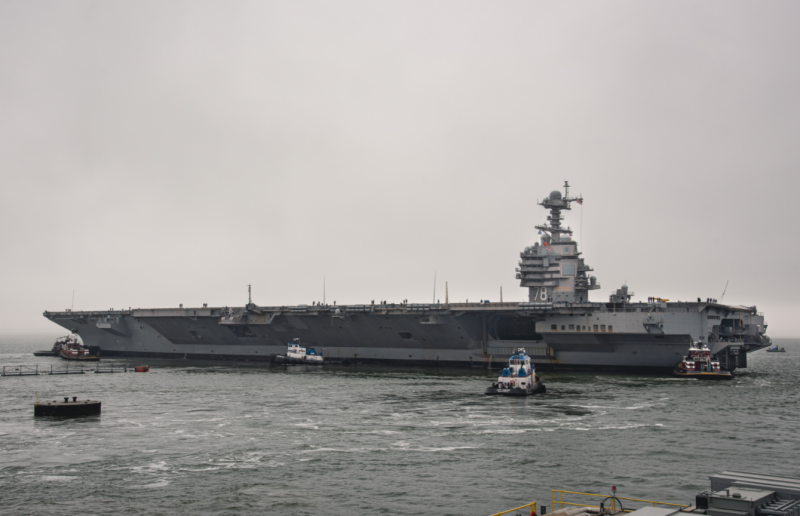Global engineering and defense technologies provider Huntington Ingalls Industries (HII) announced that the company’s Newport News Shipbuilding division completed the first planned incremental availability (PIA) for aircraft carrier USS Gerald R. Ford (CVN 78). Gerald R. Ford is the first ship in a new class of aircraft carriers that incorporates 23 new technologies, designed to support the Navy’s air wing of the future.
“It is truly an honor and a privilege for our shipbuilding team to ready this most technologically advanced aircraft carrier for the Navy fleet,” Lucas Hicks, vice president of the Gerald R. Ford and John F. Kennedy (CVN 79) aircraft carrier programs, said in a statement announcing the completion of the carrier’s maintenance and modernization period. “We look forward to folding what we learned into the entire Gerald R. Ford class, extending the Navy’s power projection advantage around the globe.”
Gerald R. Ford-class aircraft carriers incorporate new technologies such as electromagnetic catapults and weapons elevators, a redesigned flight deck and island, and more than twice the electrical capacity of Nimitz-class carriers. These aircraft carriers are designed to be the centerpiece of the Navy’s deployed battle force and alongside allies and partners, they defend freedom, preserve economic prosperity and keep the seas open and free.
The PIA involved six months of modernization and maintenance work to ensure Gerald R. Ford has the most current upgrades prior to the carrier’s maiden deployment. The ship entered the PIA in September 2021 after completing full ship shock trials and a successful post-delivery test and trials period.
Three other Gerald R. Ford-class aircraft carriers are currently under construction at Newport News Shipbuilding. They include John F. Kennedy, Enterprise (CVN 80) and Doris Miller (CVN 81). In addition, Newport News Shipbuilding is conducting mid-life refueling complex overhauls on two Nimitz-class aircraft carriers — USS George Washington (CVN 73) and USS John C. Stennis (CVN 74). These overhauls will extend the service life for each platform by another 25 years, ensuring the Navy is positioned to deploy a fleet of aircraft carriers ready to support national security requirements.




